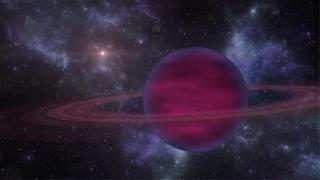General
Las estructuras en el Universo, a todas las escalas de masa, se han formado de una forma jerárquica y principalmente producidas por fusiones de galaxias. Sin embargo, esta formación jerárquica de las galaxias está modulada por el entorno en el cual se crean y evolucionan. Mientras que las galaxias de campo presentan una evolución pasiva, los cúmulos de galaxias son entornos de muy alta densidad donde las galaxias interaccionan unas con otras y con el gas intracumular caliente (ICM). Además, la dinámica de los cúmulos está dominada por la alta densidad y cantidad de materia oscura presente en los mismos y que provoca elevados potenciales gravitatorios. Por todo ello, los cúmulos de galaxias son sistemas complejos con múltiples componentes (galaxias, ICM, materia oscura) que evolucionan de manera acoplada. La mezcla de todas estas componentes, así como sus interacciones, hacen de los cúmulos de galaxias laboratorios ideales donde estudiar una gran variedad de mecanismos que provocan que la evolución de galaxias en estos entornos de alta densidad sea muy diferente a la de las galaxias de campo.
El objetivo de este proyecto es estudiar la formación y evolución de las galaxias en estos entornos densos. Se pretende entender en que entorno domina cada uno de los mecanismos de transformación de galaxias propuestos por las simulaciones numéricas y como se produce la evolución de los diferentes tipos de galaxias (tanto brillantes como enanas) en los cúmulos. Cuantificar observacionalmente la eficiencia de estos mecanismos no es una tarea sencilla ya que se conoce que muchos de ellos actúan a la vez, lo hacen en escalas de tiempo muy diferentes, y en regiones del cúmulo también diversas. Sin embargo, hay una serie de evidencias observacionales que pueden ser directamente contrastadas: i) distribución morfológica y estructural de las galaxias de los cúmulos; ii) función de luminosidad de galaxias en cúmulos; iii) luz difusa (cantidad y distribución); iv) presencia de subestructuras galácticas dentro de los cúmulos; v) propiedades espectro-fotométricas de las galaxias enanas y brillantes; vi) propiedades del ICM. Todos estos observables proporcionan la información necesaria para entender la relación entre entorno y evolución galáctica. Estas son las cantidades que se mediran en este proyecto para muestras amplias de cúmulos de galaxias.
Miembros
Resultados
- Forma Intrínseca de las Barras Galácticas. Se encontró, por primera vez, que el 52% (16%) de los bulbos son más gruesos (más planos) que la barra circundante. Se sugiere que estos porcentajes podrían ser representativos de la fracción de bulbos clásicas y tipo disco en nuestra muestra, respectivamente.
- La Influencia del Medio Ambiente en la Parada de la Formación de Estelar. Nuestros resultados indican que en entornos de baja densidad, las galaxias post-starburst se forman por fusiones menores ricas en gas, mientras que en entornos de alta densidad, las PSB se producirían al eliminar los depósitos de gas de las galaxias de líneas de emisión por presión de arrastre.
- Propiedades Morfo-Cinemáticas de los Bulbos Galácticos. Se encontró que los diagnósticos fotométricos para separar diferentes tipos de bulbos (tipo disco vs clásico) podrían no ser útiles para galaxias S0. Usando las propiedades morfo-cinemáticas de los bulbos en S0, se sugiere que estos se forman principalmente por procesos disipativos a alto redshift.



